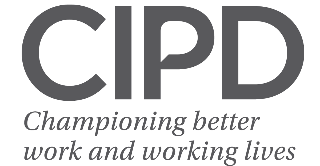And interpreting the basic speech elements individually
5CO01 |
|---|
| Learner Assessment Brief |
| Assessment ID / CIPD_5CO01_22_01 |
5CO01
Organisational performance and culture in practice
The factsheet looks at why change management is important, the implications of not managing change effectively, and the potential issues that can arise in change management processes. It offers a series of techniques to help ensure change is effective.
https://www.cipd.co.uk/knowledge/strategy/change/management-factsheet
https://www.cipd.co.uk/knowledge/work/technology/emerging-future-work-factsheet
Please note that the purpose of this insight is to link you to CIPD’s research and evidence within the subject area, so that you can engage with the latest thinking. It is not provided to replace the study required as part of the learning or as formative assessment material
Preparation for the Tasks:
You will also benefit from:
Completing and acting on formative feedback from your Assessor.
Reflecting on your own experiences of learning opportunities and continuous professional development.
IMPORTANT NOTE: At Associate Level Referencing is mandatory – you must provide a reference where you have drawn from a secondary source; Harvard referencing is preferable. Please use the Reference box provided to record all of your long references. Short references should be included within the narrative.
Upload the completed Learner Assessment brief, with both tasks completed, through the Assignments option in the Oakwood Learner Hub.
Evaluate the advantages and disadvantages of two types of organisation structures, including the reasons underpinning them. (AC 1.1)
Analyse connections between organisational strategy, products, services and customers. (AC 1.2)
Many organisations have managed considerable change in recent years. CIPD’s report, People Profession 2030: a collective view of future trends (2020) identifies ‘internal change’ as a key future trend.
Explain different approaches to managing change (AC 2.3)
 People professionals provide
a service to internal customers but to truly add value, people
professions need to understand their customer’s needs. Discuss processes
for consulting and engaging with internal customers to understand their
needs. (AC 3.3)
People professionals provide
a service to internal customers but to truly add value, people
professions need to understand their customer’s needs. Discuss processes
for consulting and engaging with internal customers to understand their
needs. (AC 3.3)
Task - Questions
| Analyse connections between organisational strategy, products, services and customers. (AC1.2) Short references should be added into your narrative below. Please remember to only list your long references in the reference box provided at the end of this section. Word count: Approximately 400 words. |
|---|
|
| Assess the scale of technology within organisations and how it impacts work. (AC1.4) Short references should be added into your narrative below. Please remember to only list your long references in the reference box provided at the end of this section. Word count: Approximately 350 words |
|---|
The scale of technology has changed tremendously in these years within the organisation. The emergency scale of technology is the Natural language understanding (NLU) is a subset of natural language processing that assists computers in comprehending human language by understanding, analysing, and interpreting the basic speech elements individually. The main advantage of the NLU technology assists in delivering background knowledge to the computer, which may then be utilized to determine what a human can say in various scenarios. This facilitates the development of self-service solutions that aid in the delivery of relevant possibilities to clients. The main disadvantage of the NLU is its flexibility, training can take time, depending on the quantity of data, and developing a model using a new set of data without utilizing a pre-trained model might take weeks to attain high performance (Bolaños, 2020). Common Workplace Benefits of Technology: Common Workplace Technology Disadvantages:
|
| Assess how people practices impact on organisational culture and behaviour. (AC2.2) Short references should be added into your narrative below. Please remember to only list your long references in the reference box provided at the end of this section. Word count: Approximately 350 words. |
|---|
Negative example- The company performance management system can also have a detrimental impact on workplace culture and employee behaviour. For example, once in my organisation the staff is provided with the performance rewards once a year, it block learning agility by failing to deliver coaching and feedback at a rate that matches the change in the business picture. Employees become demotivated when their performance is not rewarded by their managers; they believe that their managers did not focus on their development and only once a year reward them based on their performance; however, this is insufficient; employees should be rewarded based on the tasks they have finished one by one. So that they can be motivated and increase the company's productivity as well (Cipd.co.uk, 2022). |
| Discuss models for how change is experienced. (AC2.4) Short references should be added into your narrative below. Please remember to only list your long references in the reference box provided at the end of this section. Word count: Approximately 350 words. |
|---|
|
| Discuss the links between the employee lifecycle and different people practice roles. (AC3.1) Short references should be added into your narrative below. Please remember to only list your long references in the reference box provided at the end of this section. Word count: Approximately 400 words. |
|---|
| Discuss processes for consulting and engaging with internal customers to understand their needs. (AC3.3) Short references should be added into your narrative below. Please remember to only list your long references in the reference box provided at the end of this section. Word count: Approximately 350 words. |
|---|
References
Assessment Criteria Evidence Checklist
| Assessment criteria | Evidenced Y/N |
Evidence reference | |
|---|---|---|---|
| 1.1 | Evaluate the advantages and disadvantages of different types of organisation structures, including the reasons underpinning them. | Y | Briefing Document. |
| 1.2 | Analyse connections between organisational strategy, products, services and customers. | Y | Briefing Document. |
| 1.3 | Analyse external factors and trends impacting organisations to identify current organisational priorities. | Y | Briefing Document. |
| 1.4 | Assess the scale of technology within organisations and how it impacts work. | Y | Briefing Document. |
| 2.1 | Explain theories and models which examine organisational culture and human behaviour. | Y | Briefing Document. |
| 2.2 | Assess how people practices impact on organisational culture and behaviour. | Y | Briefing Document. |
| 2.3 | Explain different approaches to managing change. | Y | Briefing Document. |
| 2.4 | Discuss models for how change is experienced. | Y | Briefing Document. |
| 2.5 | Assess the importance of wellbeing at work and the different factors which impact wellbeing. | Y | Briefing Document. |
| 3.1 | Discuss the links between the employee lifecycle and different people practice roles. | Y | Briefing Document. |
| 3.2 | Analyse how people practice connects with other areas of an organisation and supports wider people and organisational strategies. | Y | Briefing Document. |
| 3.3 | Discuss processes for consulting and engaging with internal customers to understand their needs. | Y | Briefing Document. |
Declaration of Authentication
Declaration by learner
Declaration by Assessor
Assessment Criteria marking descriptors.
Assessors must provide a mark from 1 to 4 for each assessment criteria within the unit. Assessors should use the mark descriptor grid as guidance so they can provide comprehensive feedback that is developmental for learners. Please be aware that not all the mark descriptors will be present in every assessment criterion, so assessors must use their discretion in making grading decisions.
The grid below shows the range for each unit assessment result based on total number of marks awarded across all assessment criteria.
| Overall mark | Unit result |
|---|---|
| 0 to 23 | Fail |
| 24 to 30 | Low Pass |
| 31 to 39 | Pass |
| 40 to 48 | High Pass |
Marking Descriptors
Marking grid and feedback for learner
| Unit 5CO01: Assessor Feedback to Learner | |
|---|---|
| Centre number | 875 |
| Centre name | Oakwood International |
| Learner number (1st 7 digits of CIPD Membership number) | Please enter the learner number here. Must be 1st 7 digits of CIPD membership number |
| Learner surname | Please enter learner surname here |
| Learner other names | Please enter learner other names here e.g., first name and middle name(s) |
| Total marks for UNIT | Enter total unit marks here | Grade | Enter grade here | |
|---|---|---|---|---|
| Total marks for UNIT (resubmission 1 if applicable) | Enter total unit marks here | Grade (resubmission 1 if applicable) | Enter grade here | |
| Total marks for UNIT (resubmission 2 if applicable) | Enter total unit marks here | Grade (resubmission 2 if applicable) | Enter grade here | |
| Assessor signature | Please enter your Assessor signature here | |||
| Date | Please enter date here | |||







